Tami John, MD, on Assessing Red Blood Cell Function After Patients Receive Treatment for Sickle Cell Disease
The clinical associate professor at Stanford Medicine discussed new research on patients who have received HCT or gene therapy for SCD.
“We typically think that you can have mixed chimerism after transplant and ‘cure’—or at least very much transform—sickle cell disease. I wanted to see if that was true, especially in this particular situation.”
Currently, options for the treatment of sickle cell disease (SCD) that are considered potentially curative include allogenic hematopoietic stem cell transplantation (HCT) and ex vivo autologous gene therapies.1 Although these treatments are typically assessed as curative by whether a certain level of donor chimerism or a certain level of functional hemoglobin has been achieved, there is an open question in the medical community as to whether this is a sufficient approach. One area of interest for further study is the relationship between red cell function, donor chimerism, and remaining SCD complications, if any, after treatment. Currently, red cell function tests are not part of standard practice following HCT.
In order to address this question, Tami John, MD, a clinical associate professor at Stanford Medicine, and her colleagues assessed samples from patients receiving either HCT or gene therapy for the treatment of SCD. They presented their findings in a poster entitled “Red cell rheology and blood viscosity in pediatric individuals having received allogenic hematopoietic stem cell transplantation or ex vivo autologous gene therapy for sickle cell disease” at the
In an interview with CGTLive™ at the conference, John discussed the rationale behind the study and the main findings. She noted that in general, patients receiving HCT showed red blood cell function reflecting their donor, but that a small group of patients who achieved significant donor chimerism continued to show red blood cell function abnormalities. John also pointed out that further investigation in patients receiving reduced-intensity transplants and gene therapy, where there is a known risk for mixed donor engraftment or mixed gene modification engraftment, is an area of interest for further research.
REFERENCES
1. Patel AP, Kanne CK, Stenger EO, John TD, Sheehan VA. Red cell rheology and blood viscosity in pediatric individuals having received allogenic hematopoietic stem cell transplantation or ex vivo autologous gene therapy for sickle cell disease. Presented at: ASH 2023 Annual Meeting & Exposition. December 9-12; San Diego, CA. Abstract #1076
Newsletter
Stay at the forefront of cutting-edge science with CGT—your direct line to expert insights, breakthrough data, and real-time coverage of the latest advancements in cell and gene therapy.










































